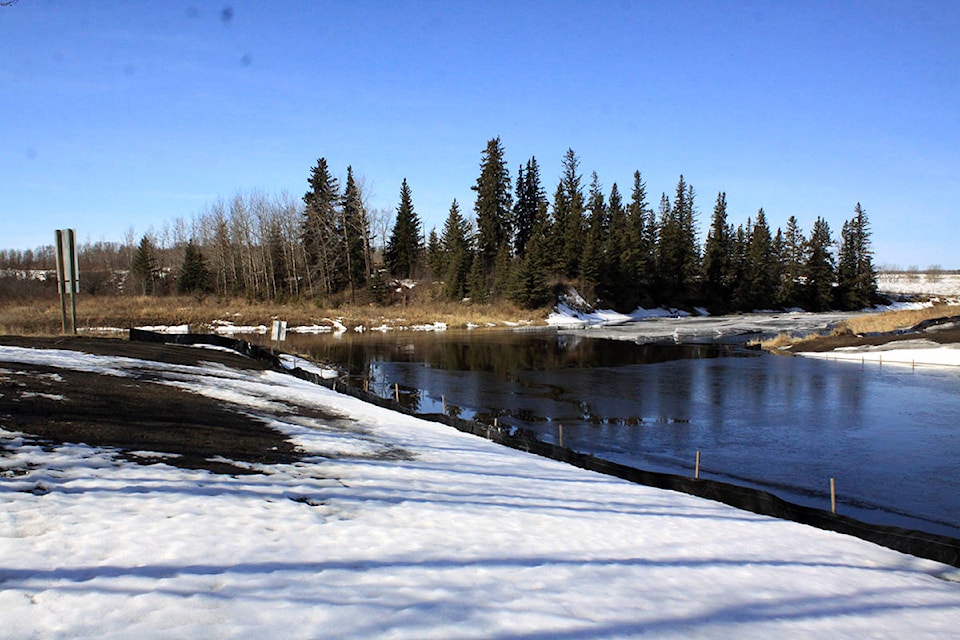As the spring melt and subsequent high water flows begin to slow, the opportunity to get Gull Lake levels back to normal is heading downstream.
Last month, Ponoka County council heard a report outlining that an invasive fish species was found in the Blindman River right at the mouth of the inlet channel that feeds the pumping station to Gull Lake.
READ: Ponoka County worries about Prussian carp in Gull Lake
Council was told of the Gull Lake Stabilization Committee’s decision not to pump water was based upon finding about 1,000 Prussian carp near the inlet. There were concerns of how to keep a species from contaminating — and potentially killing — Gull Lake for recreational fishing.
While this decision may result in the lake falling below the target level as set by Alberta Environment and Parks (AEP), its something those living there support.
“Our society has been lobbying AEP to fix the pumping system so it can continue to be used without the Prussian carp getting into the lake,” explained Norvel Horner, secretary of the Gull Lake Watershed Society (GLWS).
“We agree with the committee and AEP. You want to be absolutely sure about keeping this fish out.”
Horner added the society was told by AEP that studies have shown what needs to be done to the pumping system to ensure water flows but keeps the carp out.
“But, because the lake was so marginally above the trigger level last fall, I don’t think they have moved ahead on those as quickly as they should. They haven’t pumped for six years now and maybe have gotten a little less focused on keeping the system at an operational standard,” he said, noting there might be more to it than just that.
“Knowing the invasive fish were in the Blindman (River) is fairly recent knowledge. I only became aware of it about six months ago. I think it’s been kept fairly quiet.”
According to Horner, the issue isn’t the actual fish getting through the pumps but something much smaller.
“The eggs are the hard part to keep out because they are fairly robust, so they likely could survive going through the pumps,” he said.
“In my view, it’s unlikely that fish would go through the pumps and survive partly because of the way a centrifugal pump works. It tends to have very low partial pressure at the core of the impeller and I think the fishes’ bladders would burst there, but I’m not an expert in that.”
Meanwhile, Horner believes there is a solution that would allow pumping, but it would take both a time and financial commitment.
“You need a very fine filtration system — called ‘X-filtration’ — and I think you could create a sand filter system so that all of the water going into the pump suction had to pass through this filter first. I think one could be quite confident of filtering out the eggs and any tiny fish before it got to the pumps,” he explained.
“In correspondence with the society, AEP tells us they’ve studied methods, but have not yet shared what methods they were investigating or any of the results. We’ve been after them to share that because we’d like to be able to encourage them to fix the pumping system.
“It will involve some money plus require some design work. There are ways to do it and it’s important for the lake, which is a huge resource in central Alberta. It’s a major recreational and residential area.”
For the past two weeks, Ponoka News has been in contact with AEP representatives regarding the situation. Despite repeated interview requests and questions, no one from AEP has provided a response.
Horner noted the pumps are very important maintaining level above the target sea-level elevation of 899.16 metres.
“The water as of last fall was 898.93 m, just above the trigger elevation of 898.9 m to start pumping. Over the last five years, the lake has been quite a bit above the target. Most people around thought the higher level worked better, which is why the society passed a motion last year to lobby for a higher target level,” Horner stated.
